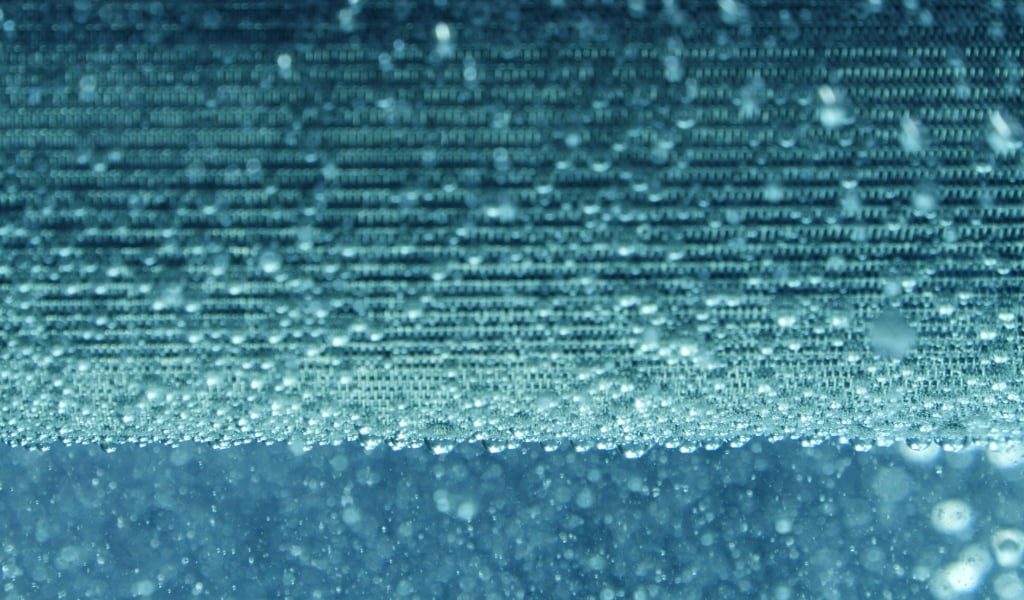How Woven Wire Mesh Enhances Water Filtration Performance
Water filtration systems face constant pressure to perform reliably while handling a wide range of contaminants. Whether in industrial, municipal, or environmental applications, filtration media must withstand harsh conditions, maintain flow rates, and deliver consistent water quality. Unfortunately, many traditional filtration materials struggle to meet these demands, leading to inefficiencies and frequent maintenance.
Woven wire mesh offers a high-performance alternative that addresses these challenges head-on. Unlike wedge wire or perforated plates, woven wire mesh offers a more refined and adaptable filtration solution, especially when it comes to microfiltration.
With its precise pore structure, customizable specifications, and durable construction, woven wire mesh provides a filtration medium that excels in both efficiency and longevity. It’s designed to handle demanding filtration environments while minimizing issues like fouling and pressure drop.
At W.S. Tyler, our mission is to provide cleaner, safer filtration solutions backed by over 150 years of engineering expertise. We understand the complexities of water filtration and are committed to helping our customers achieve optimal performance through innovative mesh technologies tailored to their unique needs.
In this article, we’ll examine the core challenges of water filtration, explore the advantages of woven wire mesh as a filtration medium, and dive into how mesh design impacts filtration efficiency. By the end, you’ll understand why woven wire mesh is a smart, reliable choice for improving water filtration outcomes across a variety of applications.
The Challenges of Water Filtration
Water filtration systems must handle a wide variety of contaminants, including suspended solids, dissolved minerals, organic matter, and microorganisms. The diversity and variability of these impurities make it difficult to design a one-size-fits-all filtration solution. Each application, no matter the industry, requires a media that can adapt to changing water conditions without compromising performance.
Maintaining consistent pressure and flow rates is critical in any filtration system. As contaminants accumulate, they can restrict flow and increase pressure drop across the filter media. This not only reduces efficiency but also places strain on pumps and other system components. Filtration media must be able to manage these dynamics while maintaining throughput and minimizing energy consumption.
Many filtration materials degrade over time or require frequent replacement due to fouling, chemical exposure, or mechanical wear. This leads to increased maintenance, downtime, and operational costs. A truly effective filtration medium must be durable enough to withstand harsh conditions, including burst and collapse pressure stresses, while offering ease of cleaning and long-term reliability.
Operators are often forced to choose between high-performance filtration and cost-effectiveness. While advanced filtration technologies may offer superior contaminant removal, they can be expensive to install and maintain. The challenge lies in finding a solution that delivers consistent water quality, resists fouling, and remains economically viable over the long term.
The Advantages of Woven Wire Mesh
Woven wire mesh offers unmatched precision when it comes to particle retention. Its uniform pore structure ensures consistent filtration, allowing operators to target specific particle sizes with confidence. This level of control is especially valuable in applications where water quality standards are strict and filtration accuracy is non-negotiable.
Made from materials like stainless steel, woven wire mesh is built to withstand harsh operating conditions, even in microfiltration applications with absolute filter finenesses down to 5 microns and nominal ratings as low as 1 micron. It resists chemical degradation, mechanical wear, thermal stress, and maintains stability under burst and collapse pressure conditions.
This durability makes it ideal for long-term use in industrial and municipal water systems, translating to fewer replacements and lower maintenance costs over time.
Compared to wedge wire and perforated plates, woven wire mesh offers superior precision, flexibility, and reliability. Wedge wire, while structurally robust, is limited by its longitudinal slot design, which can allow particles to pass through and compromise filtration accuracy. Additionally, customizing wedge wire filters can be costly, making them less practical for applications requiring tight tolerances.
Perforated plates also fall short due to their limited open surface area and restricted production capabilities for microfiltration. In contrast, woven wire mesh provides tighter particle control, significantly higher open area, and much greater design flexibility. Its ability to reliably retain particles while being tailored to specific filtration needs makes it the preferred choice for systems demanding both efficiency and cost-effectiveness.
One of the standout advantages of woven wire mesh is its ability to be tailored to the exact needs of a filtration system. Mesh count, wire diameter, weave type, and material composition can all be adjusted to optimize performance. This flexibility allows engineers to design filtration systems that meet unique flow rate, pressure, and contaminant requirements.
Unlike many disposable filtration media, woven wire mesh can be cleaned and reused without compromising its structural integrity. Cleaning methods such as backwashing, ultrasonic cleaning, or even automatic self-cleaning filters help to restore mesh performance quickly and effectively.
This reusability not only reduces waste, but it also supports sustainable filtration practices.
How Mesh Design Impacts Filtration Efficiency
The geometry of woven wire mesh plays a critical role in determining filtration efficiency. These design elements influence the size and uniformity of the openings, which directly affect how well the mesh retains particles while allowing water to flow through.
A well-balanced design ensures contaminants are captured without restricting throughput.
Open area refers to the percentage of mesh surface that allows fluid to pass through. Higher open areas typically support better flow rates but may compromise particle retention. Conversely, tighter weaves improve filtration precision but can reduce flow.
Selecting the right balance between open area and retention capability is essential for optimizing system performance and minimizing energy consumption.
Interested in learning how wire mesh can help to reduce fouling in your water filtration system? Discover more in our article below:
The choice of material, such as stainless steel, affects not only durability but also how the mesh interacts with contaminants. Smooth surface finishes can reduce the likelihood of fouling and biofilm formulation, while certain alloys offer enhanced resistance to corrosion and scaling. Wire mesh also has the ability to be enhanced with specialized metal coatings, allowing for even more flexibility in your water filtration system. These factors contribute to long-term filtration efficiency and reduced maintenance.
While wedge wires and perforated plates offer structural strength, they fall short in terms of design flexibility. Woven wire mesh can be engineered with a wide range of mesh counts, wire diameters, and weave types, allowing for precise control over filtration parameters. This level of customization is not achievable with wedge wires or perforated plates, which are typically manufactured with fixed slot or hole sizes.
No two filtration systems are alike, which is why mesh design must be tailored to specific operational requirements. Whether the goal is to filter fine sediments in drinking water or remove particulates from industrial wastewater, mesh specifications can be customized to meet performance targets.
This flexibility ensures that filtration efficiency is maximized without compromising reliability or cost-effectiveness.
Take the Next Step Toward Reliable Filtration
Water filtration systems face a range of challenges from managing diverse contaminants to maintaining consistent flow and minimizing maintenance. Woven wire mesh stands out as a solution that addresses these issues with precision, durability, and adaptability. Throughout this article, we’ve explored why it’s a smart choice to invest in wire mesh filtration due to the numerous benefits it can provide.
By choosing a wire mesh, operators gain access to a filtration medium that balances efficiency and fouling resistance while offering long-term reliability. Its customizable design and reusability make it ideal for both individual and municipal applications, helping facilities meet performance goals without sacrificing cost-effectiveness.
At W.S. Tyler, we’re committed to delivering cleaner, safer filtration solutions backed by over 150 years experience. Our woven wire mesh products are engineered to meet the evolving demands of modern water treatment systems, ensuring consistent performance and peace of mind.
Looking to take the next steps towards upgrading your water filtration systems? Learn more about the customizability of mesh and how it can be weaved for your systems specifically:
About Dylan Polz
Dylan is a Content Writer with 2 years of experience in marketing and SEO. Passionate about learning and strengthening his writing skills, he is currently expanding his expertise in particle analysis and woven wire mesh technologies. With a strong belief in the power of information to drive positive change, his goal is to develop content that supports cleaner, safer solutions across all industries.



